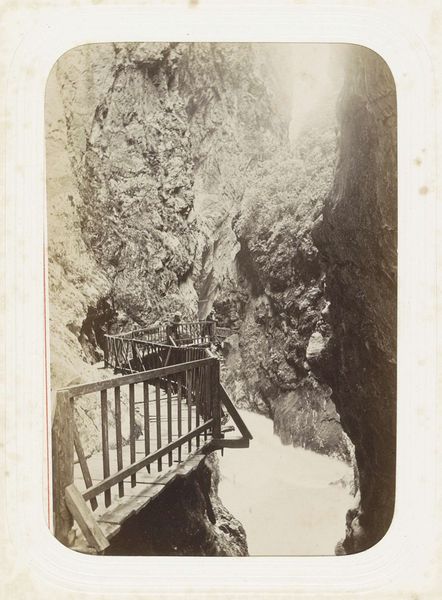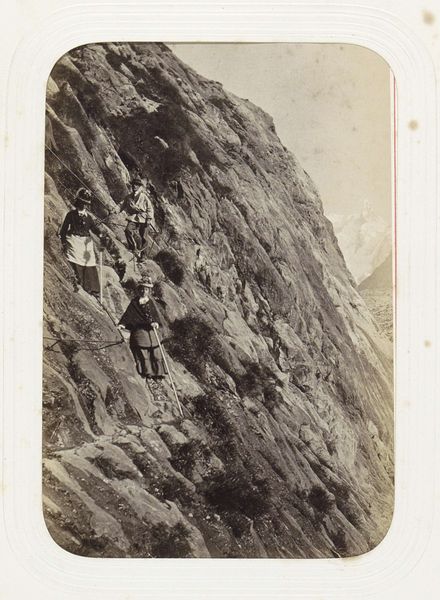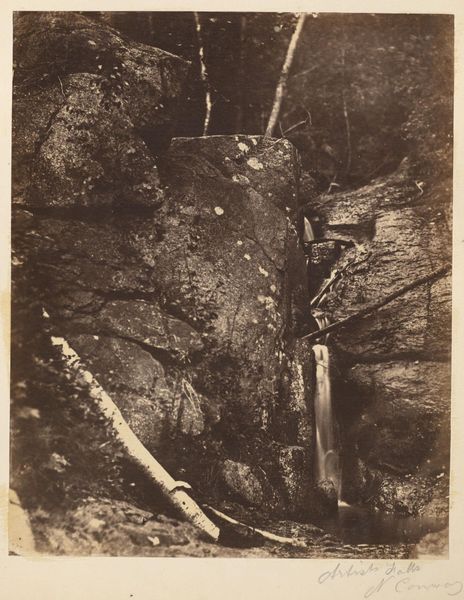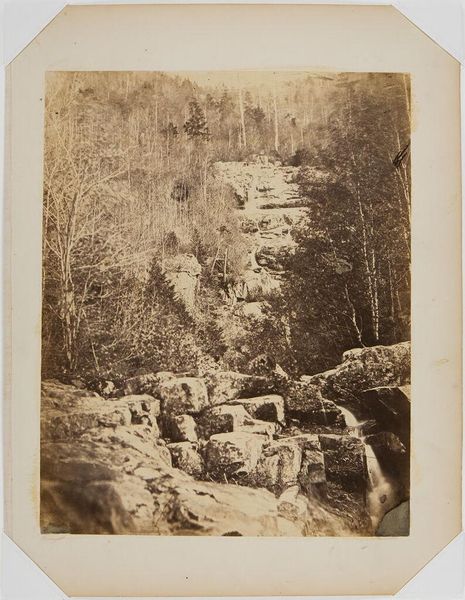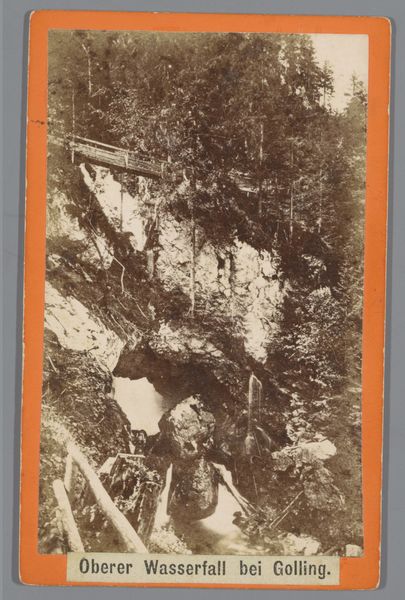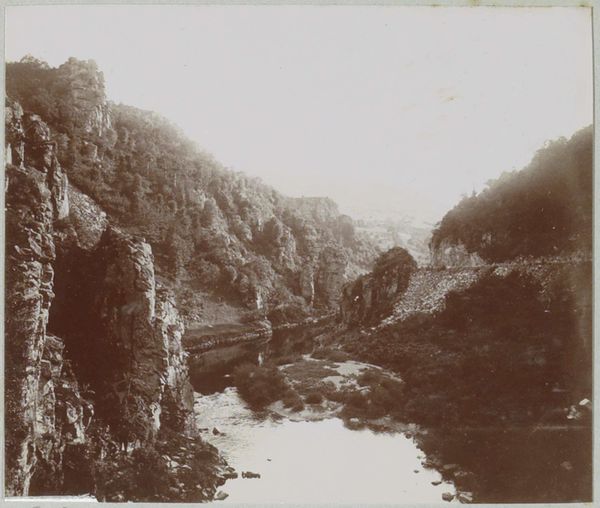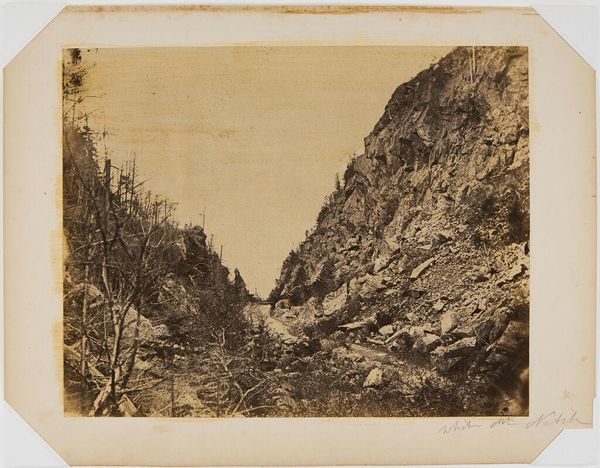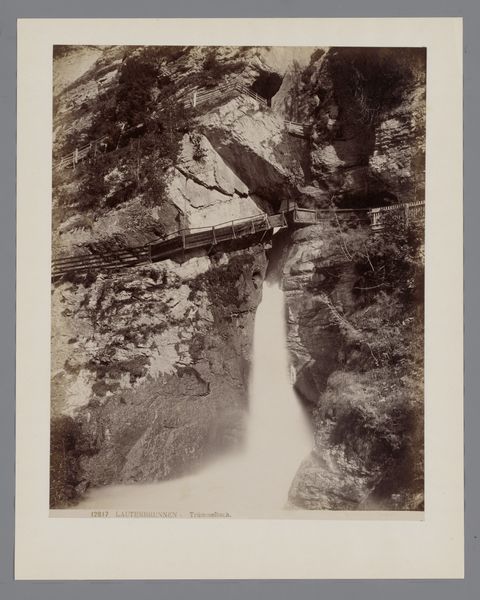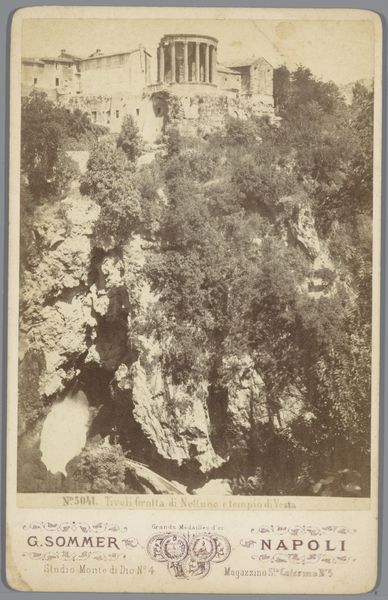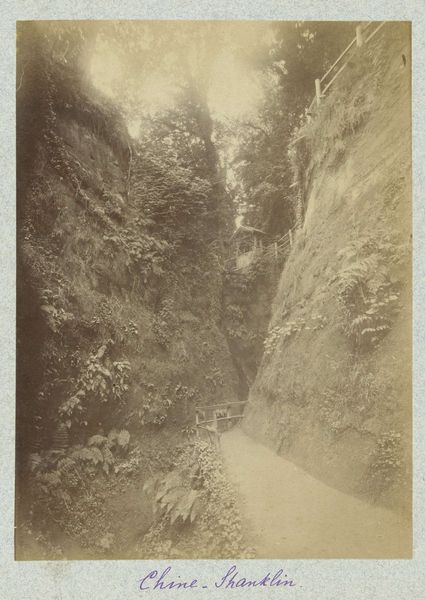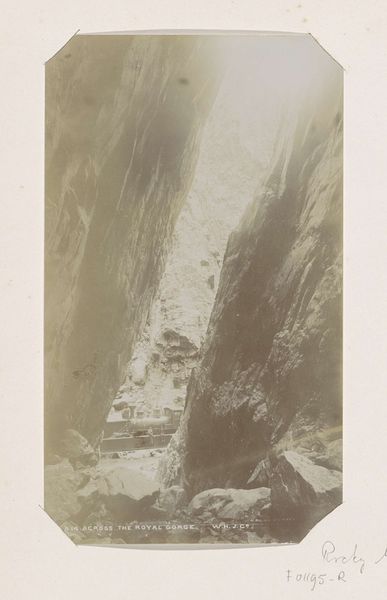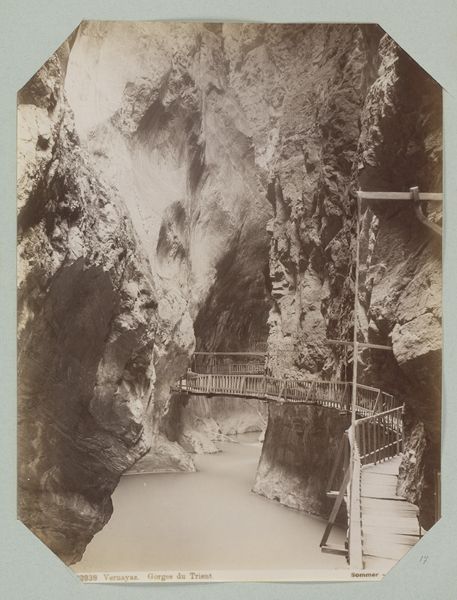
Wandelaars op een pad met reling bij de Passage de la Tête Noire bij Chamonix before 1880
0:00
0:00
photography, albumen-print
#
landscape
#
photography
#
albumen-print
#
realism
Dimensions: height 159 mm, width 108 mm
Copyright: Rijks Museum: Open Domain
Editor: Here we have "Wandelaars op een pad met reling bij de Passage de la Tête Noire bij Chamonix," a photograph dating from before 1880 by Auguste Garcin, made using the albumen print process. I'm immediately struck by the precariousness suggested by the path clinging to the cliff face. What social and historical context can you bring to this image? Curator: It’s crucial to acknowledge the rise of alpinism and tourism during this period, particularly its role in shaping class and gender dynamics. These ventures into the wilderness, often facilitated by local guides, became fashionable pursuits, largely reserved for upper classes. We must also question how such activities affected and changed the landscapes, perhaps contributing to environmental exploitation in some cases. Editor: That makes me see the photo in a different light. Before, it seemed like a straightforward landscape image, but now I see it points to broader social dynamics. The figures feel almost like props, documenting the colonial gaze in nature. Curator: Precisely. And consider the perspective of the photographer himself. Who was Garcin and what position did he hold in society? Was he capturing the experience of the hikers, or crafting an image catering to specific societal expectations and desires? Also, the labor of the local population that built the road would not be portrayed. Editor: It's a good reminder that every artwork is not just about aesthetics, but also a product of its time, embedded with social and political meaning. I’m curious now to research further into the relationship between early photography and the commodification of nature. Curator: Excellent! It encourages a deeper critical engagement beyond the surface level. Art history, and visual culture more broadly, are valuable tools for interrogating how power is manifested.
Comments
No comments
Be the first to comment and join the conversation on the ultimate creative platform.
